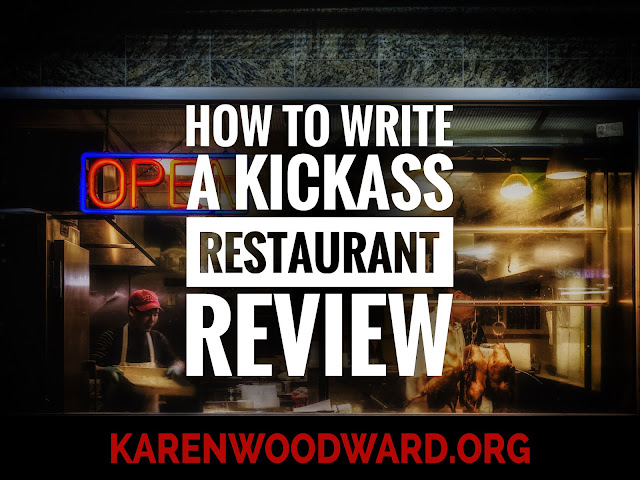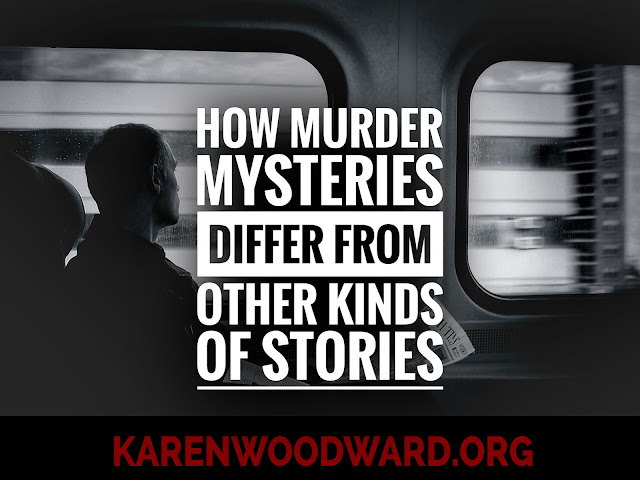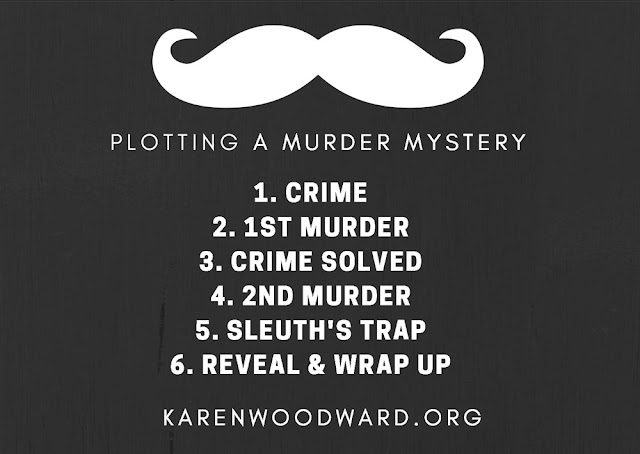This post is a continuation of my last post, Writing a Murder Mystery, Character Creation: The Murderer, Part One of Two.
Let’s continue our discussion.
7 More Characteristics That Make a Murderer Interesting:
1. The murderer must be a worthy adversary for the sleuth.
Storytellers want their audience to think the detective is clever and resourceful. How is this done? Easy! SHOW the detective being clever and resourceful by pitting her against an opposing force—the murderer—who is as clever and resourceful as herself.
When the detective fails (as she inevitably will at some point) the reader will understand that the detective is up against someone brilliant. If the murderer isn't clever, then when the sleuth fails there is a real danger the reader will lose interest.
In addition, if the murderer is at least as clever as the detective, when the detective solves the mystery and unmasks the murderer it will mean more. We want the murderer to be perceived as being so clever that ONLY your detective could have brought him to justice.
2. The murderer should act from motives of self-interest.
No inexplicable desires or drives, please. The murderer should have an easy-to-understand motive. This goes back to what P.D. James wrote about all motives boiling down to lust, lucre, loathing and love (see: The Murderer, Part One of Two[http://blog.karenwoodward.org/2017/03/writing-murder-mystery-character.html]).
3. The murderer often has a deep psychological wound.
Having a deep wound will help humanize the murderer, it will make him more sympathetic. A sympathetic character is one a reader can understand and understandable characters are ones readers can relate to. They are compelling.
4. The murderer’s ‘type’ is clear.
The murderer is brilliant.
Fictional murderers come in all sorts of flavors but we could say, broadly, that they come in two types: some murderers are brilliant (e.g., Moriarty from Sherlock[link]) while others ... not so much.
If a murderer is brilliant then, often, their strength is also their weakness. For example, in the TV show Sherlock[link] Moriarty is a brilliant psychopath. I say brilliant but it seems he’s not QUITE as clever as Sherlock. Moriarty’s oddness is explained by his intelligence, as is Sherlock’s (in this sense Moriarty is Sherlock’s nemesis[http://blog.karenwoodward.org/2013/09/character-types-and-five-bad-band.html]).
Moriarty is so intelligent ordinary humans are like ants to him. The master criminal thinks of himself as a different, and clearly superior, species. Just as many humans wouldn't bat an eye at killing a mouse or deer so Moriarty wouldn't hesitate to kill a human if it was in his interest to do so (shades of Hannibal Lecter).
As for Sherlock, his friends—John Watson and Mrs. Hudson—keep him connected to humanity, they keep him human. Moriarty has no such connection and in consequence his brilliance has stripped him of his humanity.
Another detective who, broadly speaking, fits this pattern is Mr. Monk[link]. Recall Mr. Monk’s catch phrase: It’s a gift ... and a curse. Sherlock’s brilliance is both what allows him to solve crimes and it’s also what isolates him from other people; it’s what sets him apart.
The murderer is garden variety.
If the murderer is more of a garden variety murderer then his motive usually has something to do with greed, desperation, depravity, and so on.
In a psychology course I once took the professor said that humans have four motivations for all their behavior: feeding, fleeing, fighting and ... sex. Translating this into the language of a murder mystery, the common murderer is interested in:
- Feeding: The murderer wishes to continue life as it is but someone is threatening his status quo.
- Fleeing: All hell has broken lose and the murderer has to disappear but someone is preventing this.
- Fighting: The murderer is in a smiting mood. He wants to destroy an enemy.
- Sex: Love and lust. Obsession. Love and lust are distinct and yet intertwined. Though, arguably, one can love or lust after something inanimate, here I’m talking about loving or lusting after a person. The murderer would do anything—and I do mean ANYTHING—to gain the affections of this individual, but someone is standing in her way.
4. Make the conflict personal.
Make the conflict between the sleuth and the murderer personal. Whatever motivation you give the murderer, make him want to taunt the sleuth. Also, make the sleuth willing to take crazy risks to catch the murderer.
If the murderer is caught then his/her life is over, perhaps literally, but if the murderer gets away with it, what then? What will the sleuth lose?
If the sleuth isn’t able to solve the puzzle and figure out the who, what, where, why and how—or, worse, if he offers up an incorrect solution—this would not only ruin the sleuth's reputation but send an innocent person to prison. And condemning the innocent is something the sleuth MUST care about unless he or she is an anti-hero. Caring about justice, about fairness, is a large part of what separates white hats from black hats.
5. Show that the murderer is one sick puppy.
For most of the story the antagonist is going to wear a mask. Underneath the mask she is getting more desperate and her sickness, her desperation, escalates.
One way we could show this is by escalating the number of murders, their violence, as well as the murderer's reckless daring.
6. Let your antagonist win occasionally.
Your sleuth needs setbacks. He needs strong opposition to battle against and, so, occasionally, he needs to fail. Often this happens at or near the midpoint. The sleuth—or the sleuth's helper, his Watson—thinks he knows who did it. But he’s wrong. Around either the Midpoint or the All Hope is Lost point, the suspect is found dead, killed the way the other victims were.
7. Show the killer's true face at the end.
So far the killer has hidden her true face: she is a cold-blooded killer. She has taken the lives of those she knew, perhaps even those she loved. And she did it for personal gain. She's not nice, not ordinary, perhaps not even sane. But for most of the story she has hidden in plain sight and has acted like everyone else. At the end we need to show her as she really is. We need to show readers the murderer's contempt for those around her, for those who counted themselves as her friends.
Every post I pick something I love and recommend it. This serves two purposes. I want to share what I’ve loved with you, and, if you click the link and buy anything over at Amazon within the next 24 hours, Amazon puts a few cents in my tip jar at no cost to you. So, if you click the link, thank you! If not, that’s okay too. I’m thrilled and honored you’ve visited my blog and read my post.
Midsomer Murders, Season 18.
From the blurb: “The cozy villages of Midsomer County reveal their most sinister secrets in these contemporary British television mysteries.”
That’s it for today! I’ll talk to you again on Friday. Till then, good writing!










